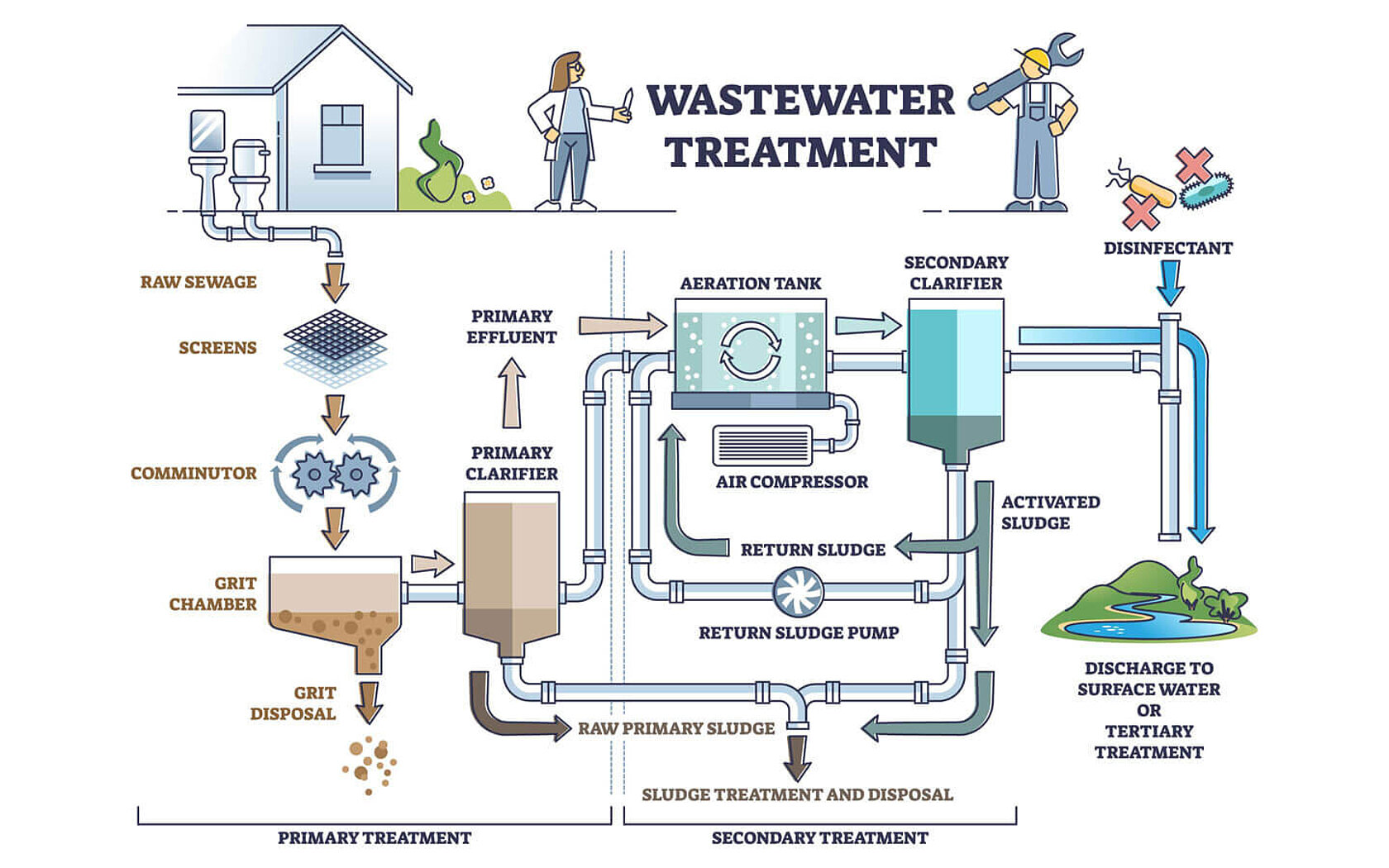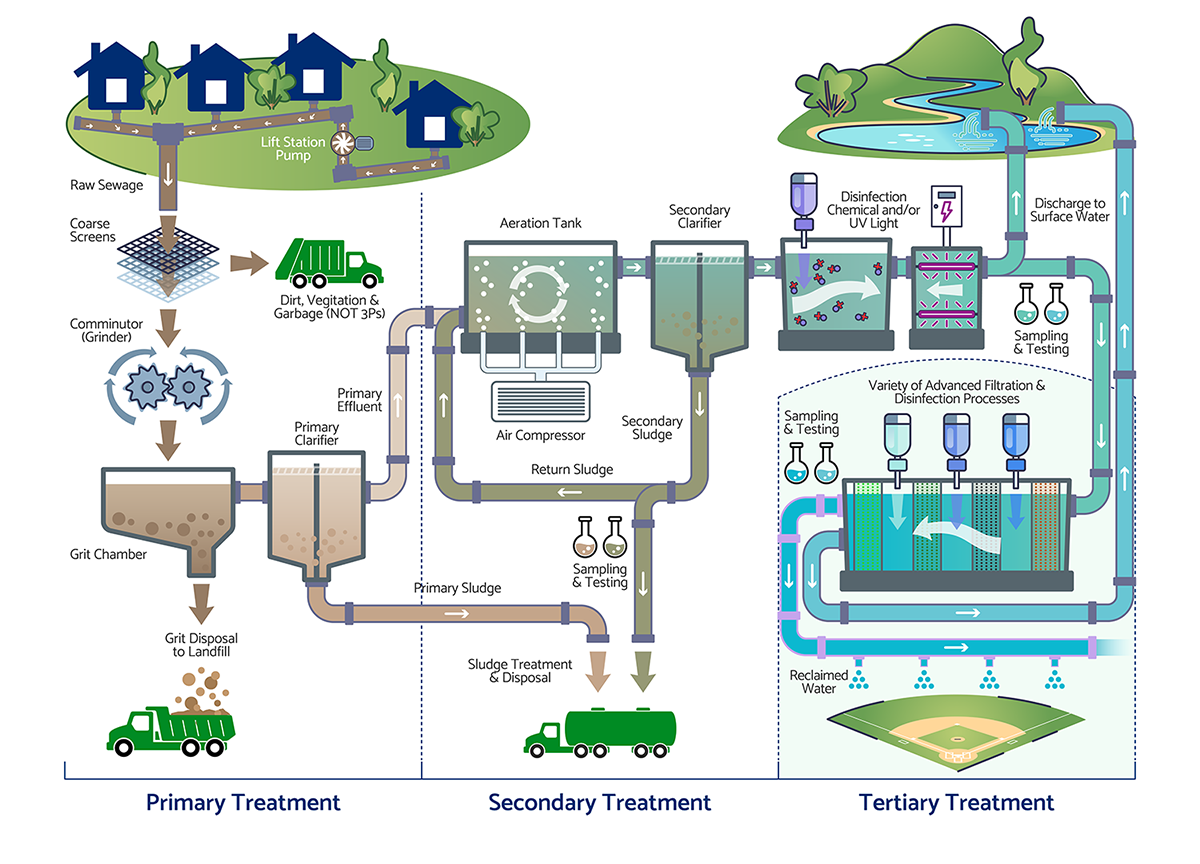Breaking Down the Basics of Wastewater System
Breaking Down the Basics of Wastewater System
Blog Article
Explore the Different Kinds of Wastewater System Suitable for Diverse Requirements
The expedition of wastewater systems exposes a spectrum of solutions tailored to meet varied ecological and functional requirements. Centralized therapy systems serve city centers properly, while decentralized alternatives offer rural areas with lasting alternatives. Industrial applications demand specialized strategies, focusing on pre-treatment and recycling. The rise of innovative technologies, such as membrane bioreactors, tips at a transformative change towards resource efficiency. Understanding these varied systems not only highlights their specific advantages but additionally raises inquiries concerning their long-term ramifications for sustainability and facilities strength. What, after that, are one of the most important obstacles and opportunities within this evolving landscape?
Introduction of Wastewater Equipment
Wastewater systems play a vital duty in managing the water that is utilized and disposed of by markets, households, and municipalities. These systems are created to gather, treat, and discharge wastewater safely, guaranteeing environmental management and public wellness. The complexity of wastewater systems arises from the diverse resources of wastewater, which can consist of residential sewage, industrial effluents, and stormwater runoff.
The basic parts of wastewater systems include collection networks, treatment centers, and disposal techniques. Collection networks contain pipelines and pumping stations that transfer wastewater from its source to therapy facilities. Therapy facilities then refine the wastewater through physical, chemical, and organic techniques to remove impurities before it is launched back into the atmosphere or reused for different applications.
The design and operation of wastewater systems should consider elements such as population density, regulatory demands, and environmental effect. Additionally, advancements in technology are resulting in the growth of much more efficient and lasting wastewater monitoring practices. Generally, effective wastewater systems are important for maintaining water high quality, conserving water resources, and promoting public wellness in communities worldwide.

Centralized Treatment Solutions
Central therapy systems are important parts of modern wastewater management, properly managing big volumes of wastewater generated by industrial tasks and city populations. These systems typically consist of a network of collection pipelines, therapy plants, and discharge electrical outlets, designed to deal with wastewater prior to it is released back right into the setting.
Centralized systems are most ideal for densely populated locations where the focus of wastewater necessitates a massive feedback. The primary advantage of such systems is their capability to supply consistent treatment requirements, making certain that effluent fulfills regulative needs prior to discharge. Centralized treatment centers commonly incorporate innovative technologies, such as organic therapy procedures, filtering, and sanitation techniques, boosting the top quality of treated water.
Operational effectiveness is another vital benefit, as economic situations of range enable reduced per-unit therapy costs compared to decentralized alternatives - Wastewater System. Central systems also deal with obstacles, including the requirement for significant facilities financial investment, prospective ecological effects from large discharge volumes, and susceptability to system failings that can disrupt service for whole neighborhoods.
Decentralized Treatment Alternatives
Decentralized treatment choices provide a flexible and lasting choice to centralized systems, especially in country or much less densely populated locations. These systems are made to deal with wastewater near to the resource of generation, decreasing the demand for considerable piping framework and reducing transportation expenses. Typical decentralized innovations consist of septic tanks, constructed marshes, and aerated lagoons, each tailored to fulfill particular local problems and treatment demands.
Septic systems, as an example, are commonly made use of for specific houses, efficiently dividing solids and fluids while enabling natural filtering through the dirt. Constructed marshes simulate natural processes, giving effective treatment via greenery and microbial task, making them an eco friendly option. Aerated lagoons use oygenation to promote microbial destruction of organic matter, suitable for larger communities or collections of homes.
Decentralized systems likewise offer durability versus facilities failings often linked with central systems, allowing neighborhoods to preserve wastewater management also throughout adverse problems. They can be integrated with water reuse techniques, advertising sustainability and minimizing freshwater demand. Therefore, decentralized therapy choices provide a feasible remedy for diverse wastewater administration needs, boosting environmental management and community health.
Industrial Wastewater Solutions
Effective monitoring of commercial wastewater is vital for lessening the ecological influence of making procedures and ensuring compliance with regulatory requirements. Industries produce varying kinds of wastewater, frequently consisting of harmful chemicals, hefty metals, and natural toxins, necessitating tailored therapy options.
One common technique to industrial wastewater administration includes pre-treatment processes, which may consist of sedimentation, neutralization, and testing to get rid of big solids and change pH levels. Complying with pre-treatment, biological treatment approaches such as triggered sludge or biofilm activators can successfully minimize natural material and nutrients. For certain markets, advanced oxidation or membrane filtration techniques may be employed to address much more complex impurities.

Conformity with regional, state, and federal regulations is paramount throughout this process. Normal click monitoring and coverage are vital to guarantee that therapy systems operate effectively and fulfill the needed criteria. In summary, calculated preparation and durable therapy innovations are vital in taking care of industrial wastewater successfully, protecting both the environment and public wellness.
Lasting and Cutting-edge Technologies
Advancements in sustainable and innovative technologies are improving the landscape of wastewater monitoring, structure upon the fundamental practices developed in commercial wastewater services. Emerging techniques such as membrane layer bioreactors (MBRs) and advanced oxidation procedures are boosting therapy effectiveness while lessening ecological effect. MBRs integrate organic therapy and membrane layer purification, permitting informative post the reliable elimination of pollutants and creating high-grade effluent suitable for various reuse applications.
Additionally, the assimilation of smart modern technologies, consisting of Web of Things (IoT) sensing units and expert system, enables real-time tracking and optimization of wastewater therapy procedures. These developments promote positive monitoring, lowering functional expenses and energy consumption. The fostering of decentralized wastewater therapy systems empowers areas to handle their resources successfully, advertising sustainability at the local degree.
In addition, the use of biotechnological methods, such as microbial gas cells, not just treats wastewater however additionally creates renewable resource. These technologies emphasize the change towards a circular economic situation, where wastewater is deemed a resource rather than a responsibility. By accepting these cutting-edge and sustainable innovations, the wastewater industry can substantially contribute to environmental management and durability versus future challenges.
Verdict
In recap, wastewater systems include a range of solutions customized to fulfill distinctive needs throughout metropolitan, country, and industrial contexts. Centralized treatment systems deliver harmony in metropolitan areas, while decentralized choices supply flexibility and sustainability for country areas. Industrial wastewater management highlights pre-treatment and recycling to decrease environmental influence. In addition, innovative technologies improve source performance and sustain a circular economic climate. Jointly, these varied systems play an important function in effective wastewater monitoring and environmental management.
The complexity of wastewater systems develops from the varied resources of wastewater, which can i thought about this include residential sewage, commercial effluents, and stormwater overflow.
The essential parts of wastewater systems consist of collection networks, treatment centers, and disposal methods (Wastewater System).Decentralized systems also supply strength against infrastructure failings often associated with centralized systems, allowing communities to preserve wastewater administration also during negative conditions.Advancements in lasting and cutting-edge innovations are reshaping the landscape of wastewater monitoring, structure upon the foundational techniques developed in commercial wastewater options. The adoption of decentralized wastewater therapy systems empowers neighborhoods to handle their sources properly, advertising sustainability at the local level
Report this page